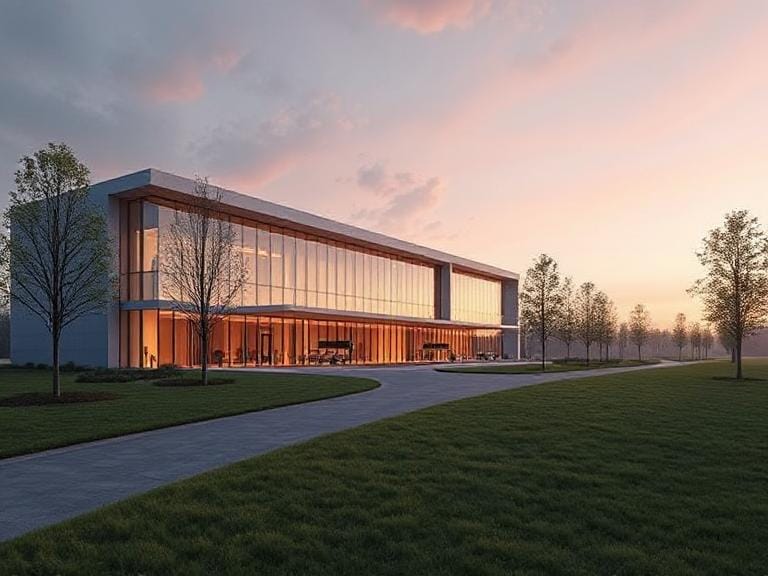The Role of Power Washing in Preventing Slip Hazards
Slip hazards are dangerous conditions that can lead to accidents resulting in injuries, primarily through slipping and falling. These hazards are commonly associated with a variety of surfaces, particularly when wet or contaminated with substances such as grease, dirt, or ice. It is essential to identify the causes of these hazards to mitigate the risks they present. For instance, uneven surfaces, poor drainage, and inadequate maintenance can all contribute to the creation of slippery conditions.
According to the National Safety Council, slip-and-fall accidents account for a significant number of injuries each year. These incidents are not limited to specific environments; they can occur in residential homes, commercial buildings, and outdoor spaces. For example, walkways, staircases, parking lots, and uneven sidewalks are frequently cited as common locations where slip hazards can occur. The consequences of these accidents can be severe, often leading to broken bones, sprains, and sometimes even long-term disability, impacting not just the individual’s health but also productivity and healthcare costs.
Weather conditions play a crucial role in augmenting slip hazards. Rain, snow, and ice can render surfaces dangerously slick, while fallen leaves can obscure ground irregularities, increasing the chance of accidents. Similarly, surface materials such as tile, concrete, and wood vary in their slip resistance; some may offer more grip under certain conditions while being more hazardous in others. By understanding these factors, property owners can take proactive measures to eliminate potential risk areas. Regular maintenance, including power washing, can significantly reduce the presence of slippery substances, thereby enhancing safety for all users of the space.
Understanding Power Washing
Power washing, also known as pressure washing, is a cleaning technique that employs high-pressure water spray to eliminate dirt, grime, mold, algae, and other contaminants from various surfaces. It is an effective method for restoring the appearance and safety of outdoor areas, including walkways, driveways, decks, and patios. The equipment utilized in power washing typically consists of a high-pressure washer, which contains a motor or engine that powers a pump. This pump elevates the water pressure, allowing it to be expelled through a nozzle at a rapid pace.
The process begins by connecting the power washer to a water source, usually a garden hose. The operator selects an appropriate nozzle, which can vary in size and spray pattern depending on the specific cleaning requirements. For instance, a narrow nozzle would produce a concentrated stream of water ideal for removing stubborn stains, while a wider nozzle may be more suitable for cleaning delicate surfaces without causing damage. Once set up, the operator directs the spray at the surface to be cleaned, effectively dislodging debris and slippery residues.
Power washing offers numerous benefits, especially in the context of safety. By effectively removing algae, mold, and other slippery substances from surfaces, it significantly reduces the risk of slip hazards in high-traffic areas. Regular power washing not only enhances the aesthetic appeal of outdoor spaces but also prolongs the lifespan of surfaces by preventing deterioration caused by accumulated grime and organic growth. Consequently, incorporating power washing into routine maintenance is crucial for creating safe environments, particularly in residential and commercial properties where slip and fall accidents are a concern.

The Connection Between Power Washing and Slip Hazard Prevention
Power washing, a method of cleaning surfaces using high-pressure water, plays a crucial role in minimizing slip hazards in both residential and commercial settings. Regular power washing effectively reduces the accumulation of dirt, algae, mold, grease, and other contaminants that can create slippery conditions, particularly in high-traffic areas. Surfaces such as driveways, walkways, decks, and patios greatly benefit from this cleaning method, as it enhances visibility and traction, making them safer for pedestrians.
Slippery surfaces are a significant concern, especially during wet weather. For instance, a property with a concrete driveway that has not been power washed for an extended period may develop a buildup of grime that exacerbates the risk of slipping. Conversely, power washing not only cleans these surfaces but also restores their texture, significantly improving their slip resistance. A well-maintained surface allows for better traction underfoot, reducing the likelihood of accidents and injuries.
Case studies illustrate the benefits of power washing in slip hazard prevention. For example, a local restaurant that regularly conducts power washing experienced a marked decrease in customer slips and falls during rainy days. Before implementing a routine power washing schedule, the establishment noted frequent incidents on its patio area due to a slippery film created by debris and food spills. After consistently power washing the surfaces, the restaurant improved its safety record, demonstrating effective slip hazard mitigation.
To maintain optimal slip resistance, it is recommended that property owners schedule power washing at least once or twice a year, depending on the location and type of surfaces. High-traffic areas may require more frequent cleaning to ensure that safety standards are upheld. Implementing an appropriate power washing schedule can significantly enhance the safety of various surfaces, thereby contributing to a healthier environment and a reduction in slip hazards.
Best Practices for Effective Power Washing
Power washing is an invaluable method for maintaining cleanliness and safety in various environments. To effectively incorporate power washing into maintenance routines, it is crucial to observe best practices that promote safety, efficiency, and sustainability. Whether performed by experienced professionals or DIY enthusiasts, understanding safety precautions is essential to minimize the risk of accidents.
Before initiating power washing, individuals should assess the area to identify potential hazards. Ensure that the surroundings are clear of obstacles, electrical wires, and sensitive surfaces that could be damaged by high-pressure cleaning. It is imperative to wear appropriate personal protective equipment (PPE), including eye protection, gloves, and non-slip footwear. Water pressure should always be adjusted according to the surface being cleaned; improper settings can lead to injuries or property damage.
For those opting to hire professional power washing services, selecting a reputable and experienced contractor is key. Look for service providers with positive reviews and the necessary certifications. Inquire about their cleaning methods and materials to ascertain that they use eco-friendly solutions, which reduce environmental impact. Furthermore, verify that they carry liability insurance, offering protection in case of accidents or property damage during the cleaning process.
Choosing the right power washing equipment is equally important. For residential use, electric power washers are often sufficient for light cleaning tasks, while gas-powered models are better suited for larger areas with stubborn grime. Purchasing or renting equipment should be based on the specific cleaning requirements, ensuring versatility and effectiveness.
After power washing, conducting a thorough post-cleaning inspection is vital to evaluate the area for any remaining slip hazards. Any slippery residues or potential hazards should be addressed before the area is reopened for use. This comprehensive approach not only enhances safety but also prolongs the life and integrity of surfaces treated through power washing.







